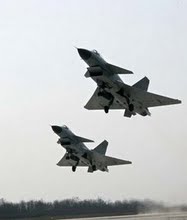China’s newest nonlinear of sight weapon system
In 4th CPEX (China Police Expo) held in Beijing, Chinese companies just opened two kinds of nonlinear of sight tactic weapon systems: HD66 and CF06, which are based on QSZ92 9 mm pistol and co-developed by Chongqing Changfeng Machinery Co Ltd and Shanghai Sea Shield Technologies Company.
The HD66 weapon system including: QSZ92 9 mm pistol, fire module, double safety part, CCD module, video processing module, Ocular displaying module, illuminating module (including a video cam, a Laser dazzle sight and a Infrared illuminating spotlight), weapon correction system, radio signal transmitting/receiving module and supply power. Most of CF66 system is same with HD66’s, but CF66 uses red-dot-sight, reflector and daylight/night sight for shooting. Mr. Qing Shangsheng, the chief designer of HD66 and CF06 systems, explained that the CF66 is just applicable in some extremely cold areas where the electronic parts, e.g CCD, can not work.
Chinese weapon makers may notice the striking similitude between their nonlinear of sight tactic weapon system and Israel CornerShot. Chinese designer insisted that HD66 and CF66 are totally designed without outside assistants and their performance is better than CornerShot:
·HD 66 has an improved pistol mounting method than Cornershot’s 2 pressing plates to provide a higher shooting accuracy. Cornershot’s mount adapter has 2 pressing plates to clamp weapon and it needs time to correct after reload weapon. And HD 66 mount stock has slot joint with pistol’s detent and locks the pistol by positioning pin.
·HD 66 has a better man-machine interface, such as people can search the object in proper eye alignment with the Ocular displaying scope and cheek pad.
·Software weapon correction to replace mechanical aimpoint adjustment.
·The signal transmitting/receiving system can help to organize 4 people’s coordinated attack to provide a greater firepower.
·Ocular displaying scope has more combat concealment consideration than Cornershot’s LCD display, which possibly exposes the shooter by the screen glisten.
hoooooooo, Chinese people's Cornershot!!!!!!!!
But who can tell me how to insert a data table in the post?
Tomorrow continue...









